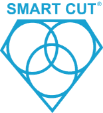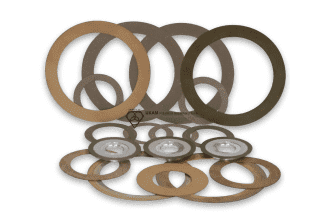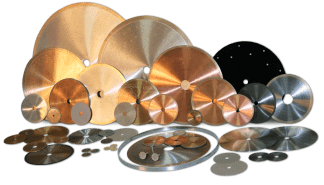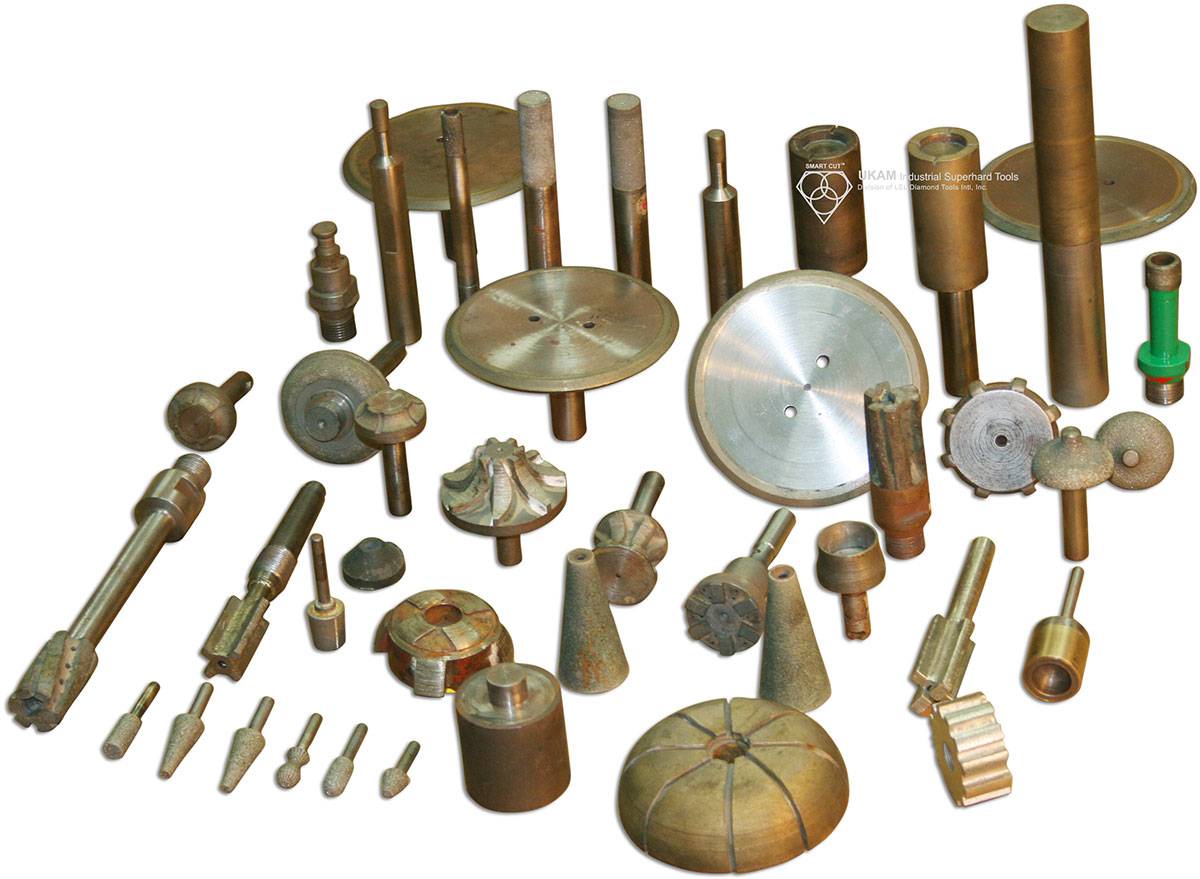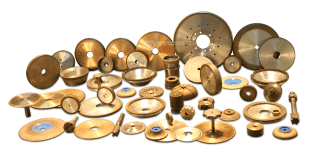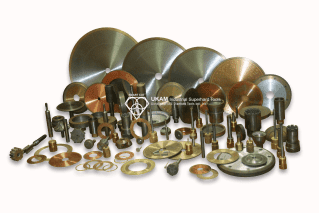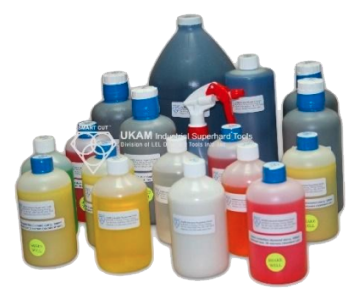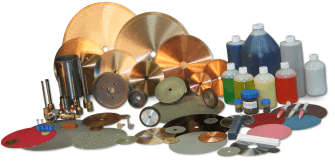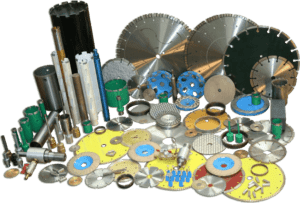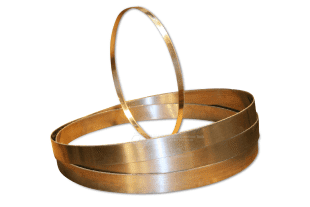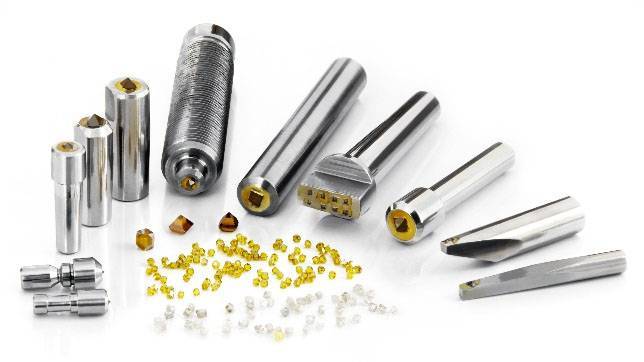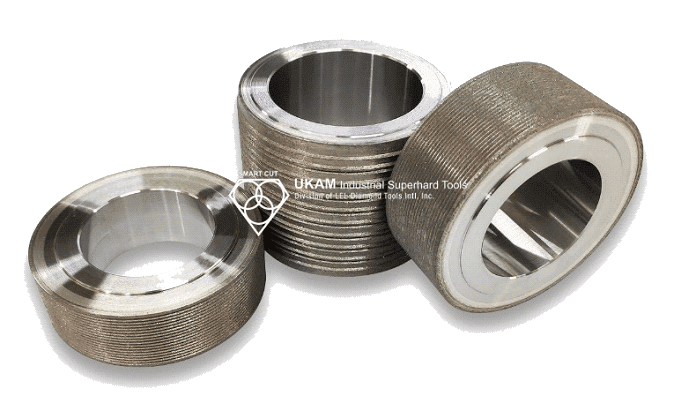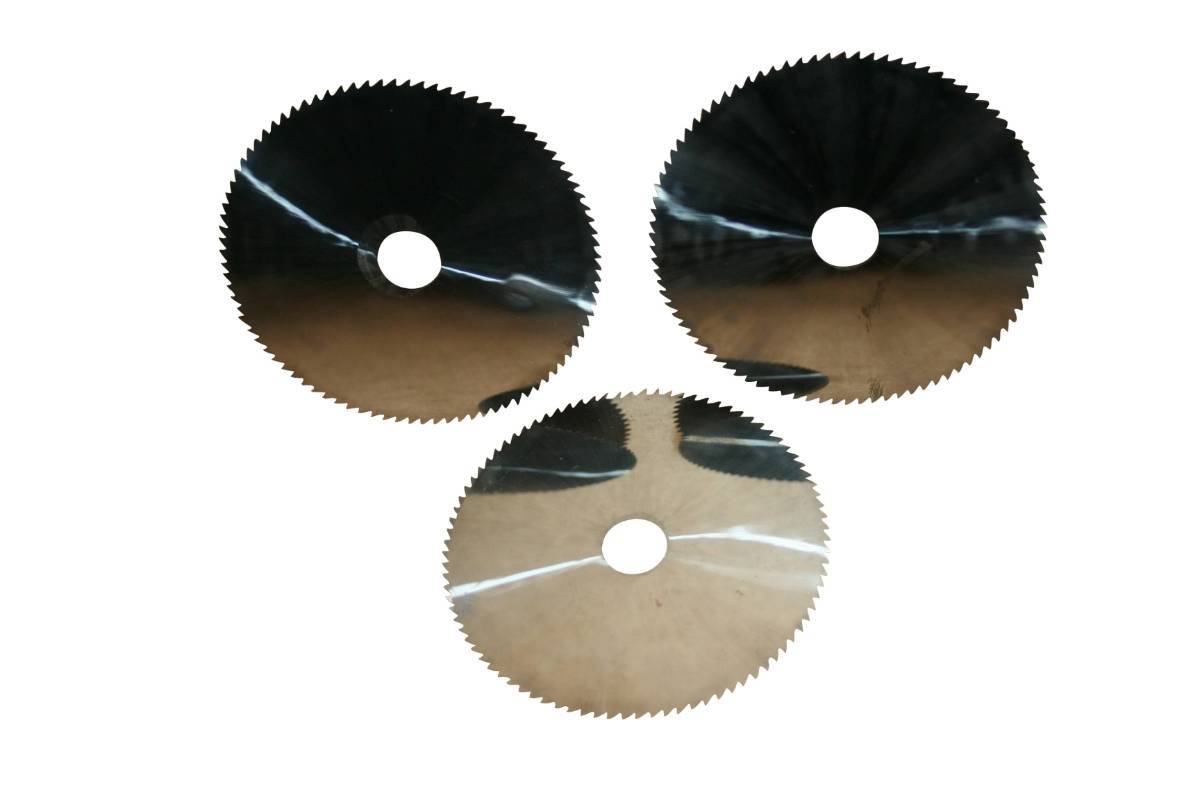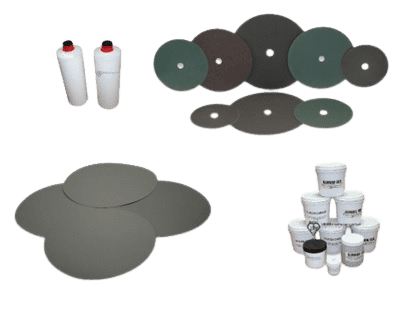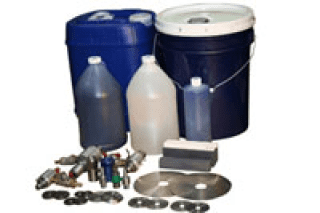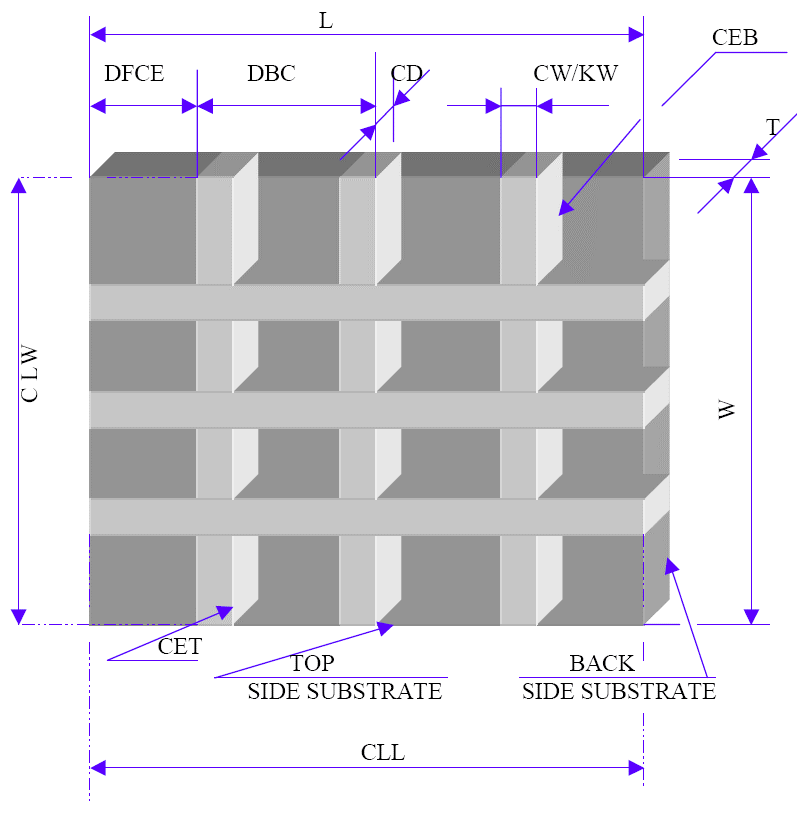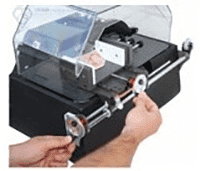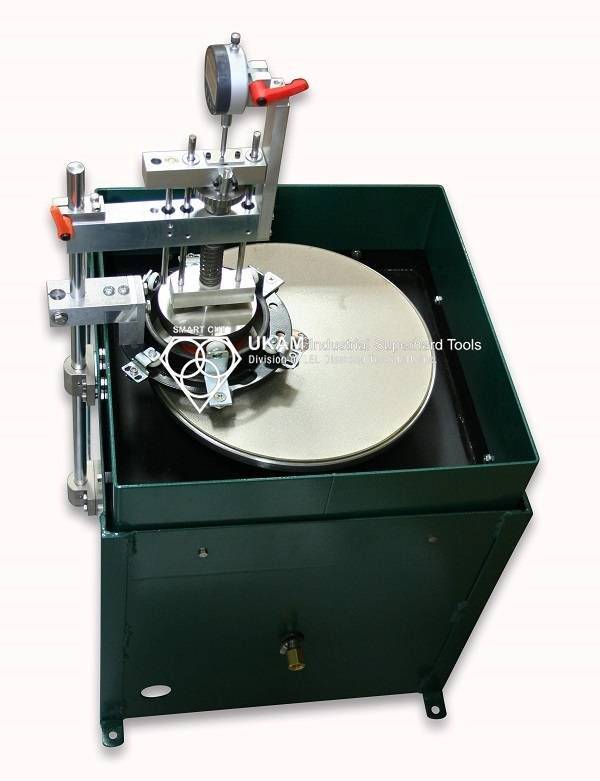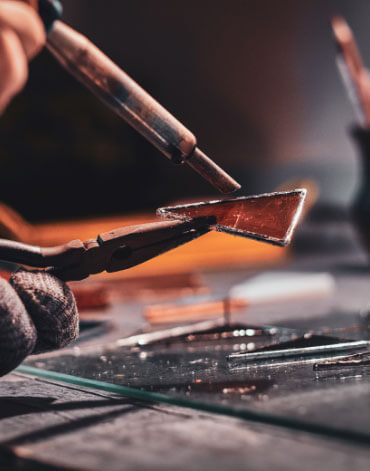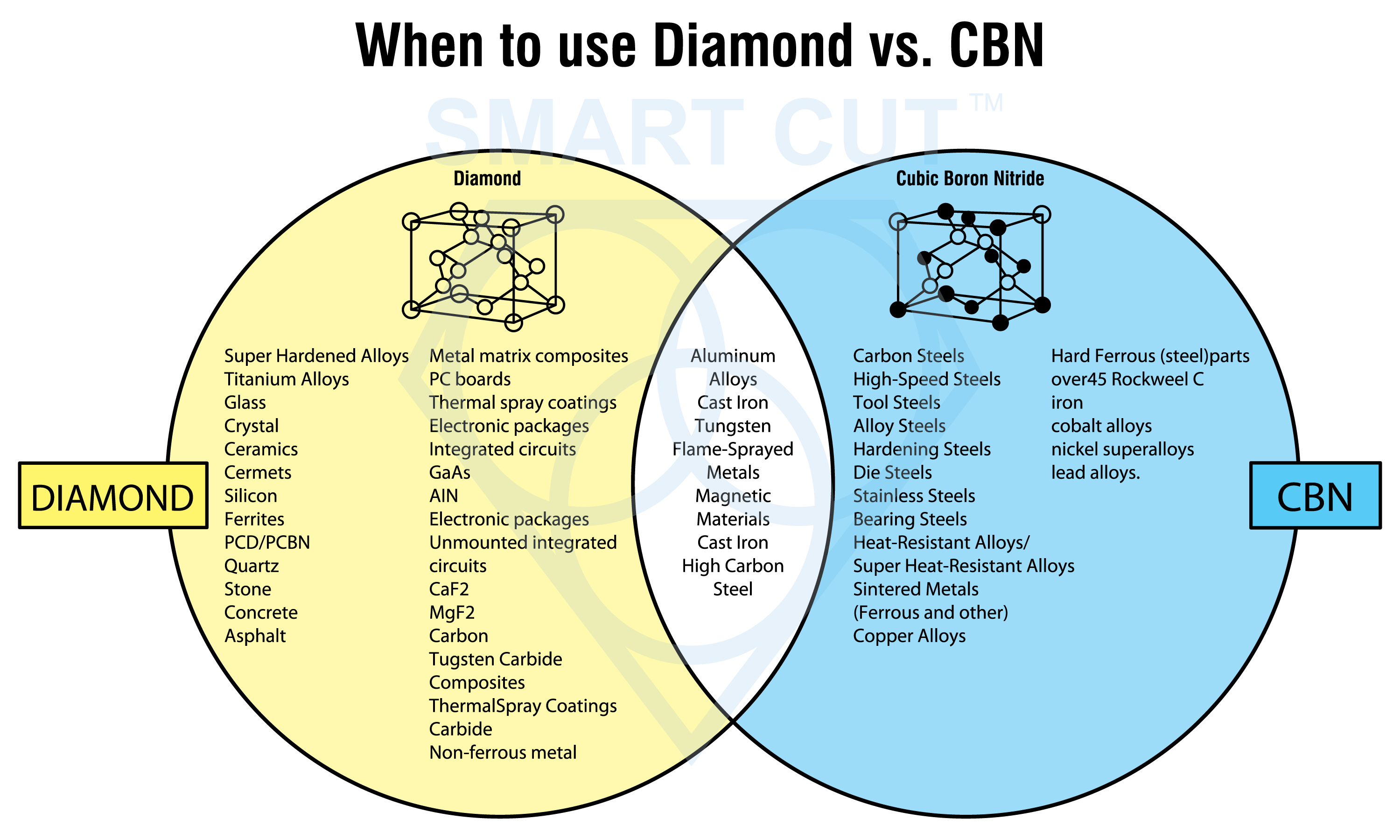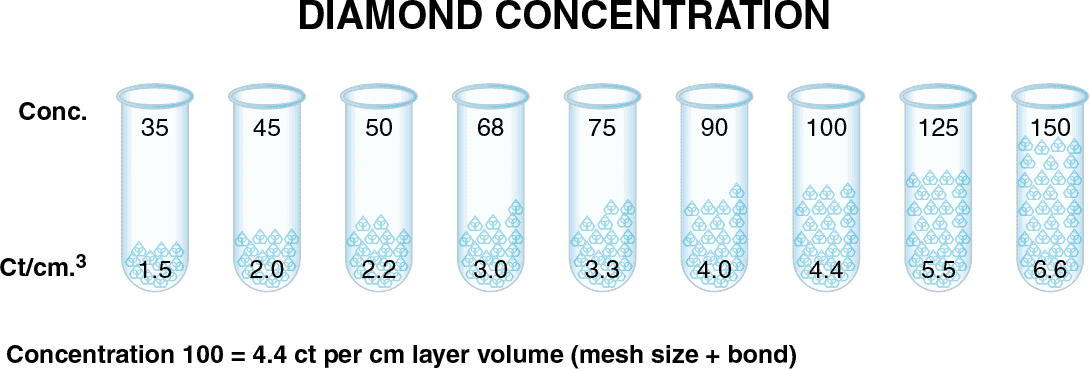Key Variables in Diamond & CBN Tool Performance that affect your ROI
-
Posted by
contactor6

Understanding the variables that play an important role diamond tool performance is important for achieving optimal results & improving your return on investment (ROI). This article dives into essential factors such as selecting the appropriate diamond & cbn tools for specific materials, proper tool dressing, operator expertise, and maintaining optimal machine conditions.
Selecting the right diamond or CBN tool involves understanding the material's hardness, abrasiveness, and thermal properties, crucial for maximizing tool effectiveness and longevity. Proper tool preparation, including truing and dressing, is also vital even for new tools to ensure peak performance.
Operator experience significantly influences results, proper training can prevent common mistakes and enhance tool efficiency. Additionally, regular machine maintenance is necessary to ensure consistent performance and extend tool life.
This guide aims to provide insights into managing these factors effectively, helping you achieve better precision and efficiency in your machining operations.
Material Type
The material being cut and its variations greatly influence the life and performance of diamond tools. Unfortunately, there isn't a universal diamond tool that works optimally on the many different types of non-metallic, hard, and brittle materials efficiently, effectively, and economically. Therefore, it is necessary to have different specifications for various material types or groups.
The selection of diamond or CBN tools is significantly influenced by the types of materials you intend to work with. Important characteristics such as hardness, abrasiveness, thermal properties, and other physical traits, along with the material's dimensions, thickness, and shape, are key considerations. Each of these properties greatly affects the choice of tool type, grit size, concentration, and the hardness and composition of the bond. These factors are crucial because they directly impact the tool's performance, durability, and efficiency. By understanding these material attributes, you ensure the selection of the most suitable diamond or CBN tool for your specific applications.
How Material Type Can Help Improve Diamond & CBN Tool Return On Investment:
Selecting the appropriate diamond tool based on the material type significantly enhances return on investment by optimizing tool performance, durability, and efficiency. Understanding the material's hardness, abrasiveness, and thermal properties helps in choosing the correct tool specifications, which minimizes wear and tear, reduces downtime, and improves cutting precision. This tailored approach prevents unnecessary tool replacements, lowers operational costs, and increases productivity, ultimately leading to a higher ROI for diamond tools.

Material Shape / Geometry
Understanding the shape and geometry of the material you're cutting is essential for achieving the best results with diamond tools. Different shapes can pose challenges to the cutting process and may require specific tools. For example, intricate shapes need precise, specially designed tools to navigate tight corners and curves without causing damage. Materials with flat surfaces are generally easier to handle compared to those that are cylindrical or irregularly shaped, which might need special setups to keep them stable during cutting.
The quality of the edges also matters—if you need them to be smooth or have specific angles, this will influence the type of blade you use. Features within the material, like holes or internal cuts, require careful planning and possibly special drills. The size and thickness of the material impact the choice of blade size and cutting speed, ensuring the material doesn’t break and the cutting is efficient. Additionally, the intended use of the material after cutting dictates how precise the cutting needs to be to minimize waste and save time.
How Material Shape & Geometry Can Help Improve Diamond & CBN Tool Return On Investment:
Understanding the shape and geometry of the material enhances return on investment for diamond tools by allowing for the selection of appropriate tools and cutting strategies. Tailoring the tool choice and cutting approach to the material's characteristics ensures precise cuts, reduces the risk of damage, and minimizes waste. This efficiency not only preserves the integrity of the material but also extends the lifespan of the diamond tool, leading to reduced costs and improved productivity, ultimately resulting in a higher ROI.

Dressing Diamond Tools
To achieve the best performance and extend the lifespan of diamond tools, it is essential to properly true and dress them on the machine where they will be used. Even new diamond tools require this preparation — never assume that they are ready to use straight out of the box. Dressing a diamond tool involves removing a small layer from the tool's surface to expose fresh, sharp diamond particles. This is crucial for maintaining cutting efficiency and precision. To properly dress a new diamond tool, use a compatible, soft dressing stick. Gently pass the tool through the stick five to ten times, which helps to even out any irregularities and fully expose the diamond particles. Truing, on the other hand, is about ensuring the tool's cutting surface is perfectly aligned with the machine. This step is critical for the tool to perform effectively, preventing uneven wear or damage during operation.
How Dressing Can Help Improve Diamond & CBN Tool Return On Investment:
Properly dressing and truing diamond tools enhance their cutting efficiency, extend their lifespan, improve product quality, reduce machine wear, lower energy consumption, and ensure consistent production. These practices directly lower operational costs, increase productivity, and improve profitability, ultimately leading to a better return on investment for diamond tools.
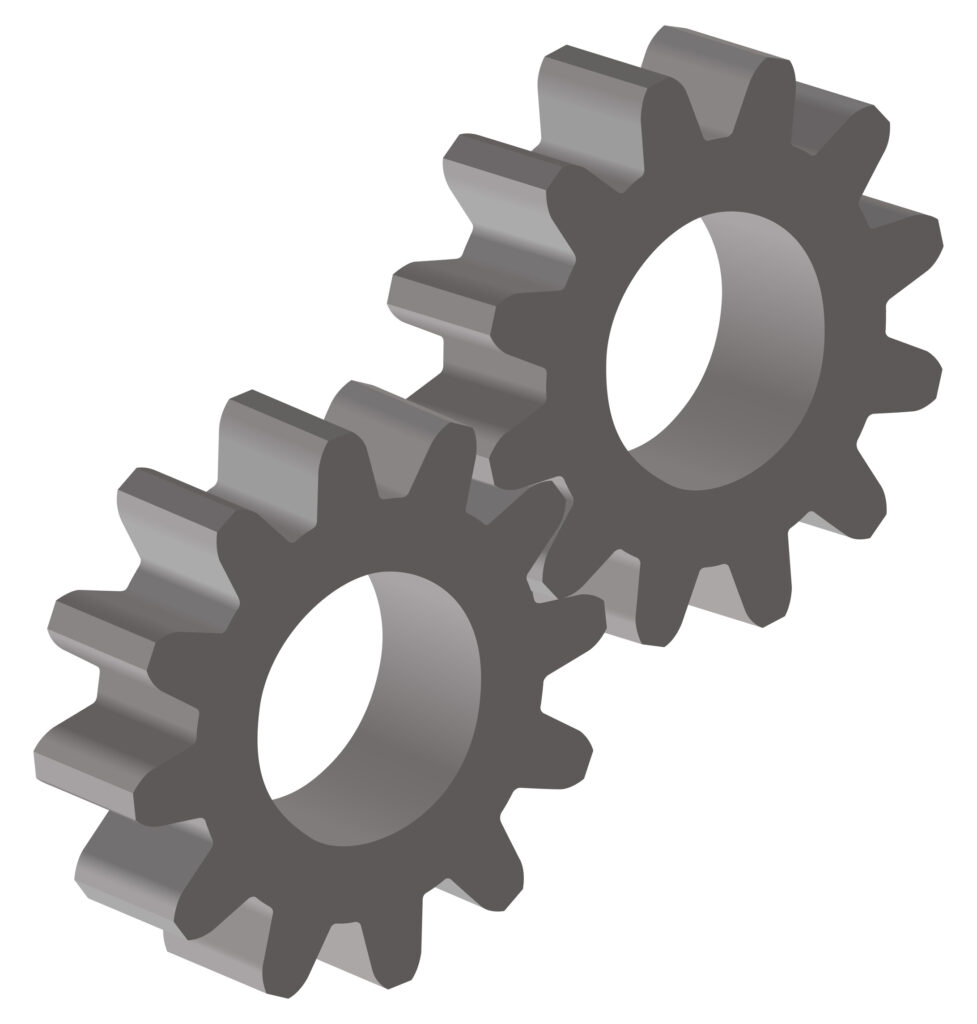
Operator Experience & Training
Many operators begin their diamond machining tasks without adequate information or with misconceptions, leading to errors during the setup phase and the omission of crucial steps. When issues arise, there is often a hurried response to address the immediate symptoms rather than the underlying cause. In situations where there are problems or inconsistencies in tool performance, few take the time to critically evaluate their processes.
This lack of thorough examination can lead to frustration, causing operators to mistakenly blame the diamond tools they are using. For instance, what some clients might consider a severe problem could often be resolved simply by adhering to fundamental best practices. Ensuring operators are well-informed and properly trained can significantly improve the efficiency and outcome of diamond machining applications, emphasizing the importance of a deep understanding of both the tools and techniques involved.
How Operator Experience Can Help Improve Diamond & CBN Tool Return On Investment:
Operator experience and training are crucial for improving the return on investment for diamond tools. Well-trained operators are less likely to make setup errors or overlook important steps, leading to fewer mistakes and higher efficiency. When issues arise, properly trained operators can address the root causes rather than just the symptoms, resulting in better tool performance and longer tool life. This enhances productivity and reduces waste, ultimately leading to a higher return on investment. Additionally, a deep understanding of the tools and techniques helps operators optimize processes, further improving efficiency and profitability.

Operator
The operator's skill and experience play a critical role in maximizing the performance of diamond tools, regardless of whether the machinery is operated manually or automatically. Some operators possess the aptitude and experience necessary to optimize the efficiency of nearly any diamond tool, while others may achieve only marginal results. Often, many end users start their tasks uninformed or misinformed, leading to mistakes during the setup phase and the omission of critical steps. When issues arise, the common reaction is to address symptoms rather than identifying and resolving the underlying causes. This approach can lead to misdiagnoses of the problems at hand.
However, when faced with performance variations or issues, few operators take the time to thoroughly assess and rethink their processes. This can lead to frustration, which often results in unfairly blaming the diamond tool being used. What is sometimes perceived as a significant issue by some clients could often be resolved with a simple adjustment. Proper training and a methodical approach to troubleshooting are essential in overcoming these challenges and ensuring optimal tool performance.
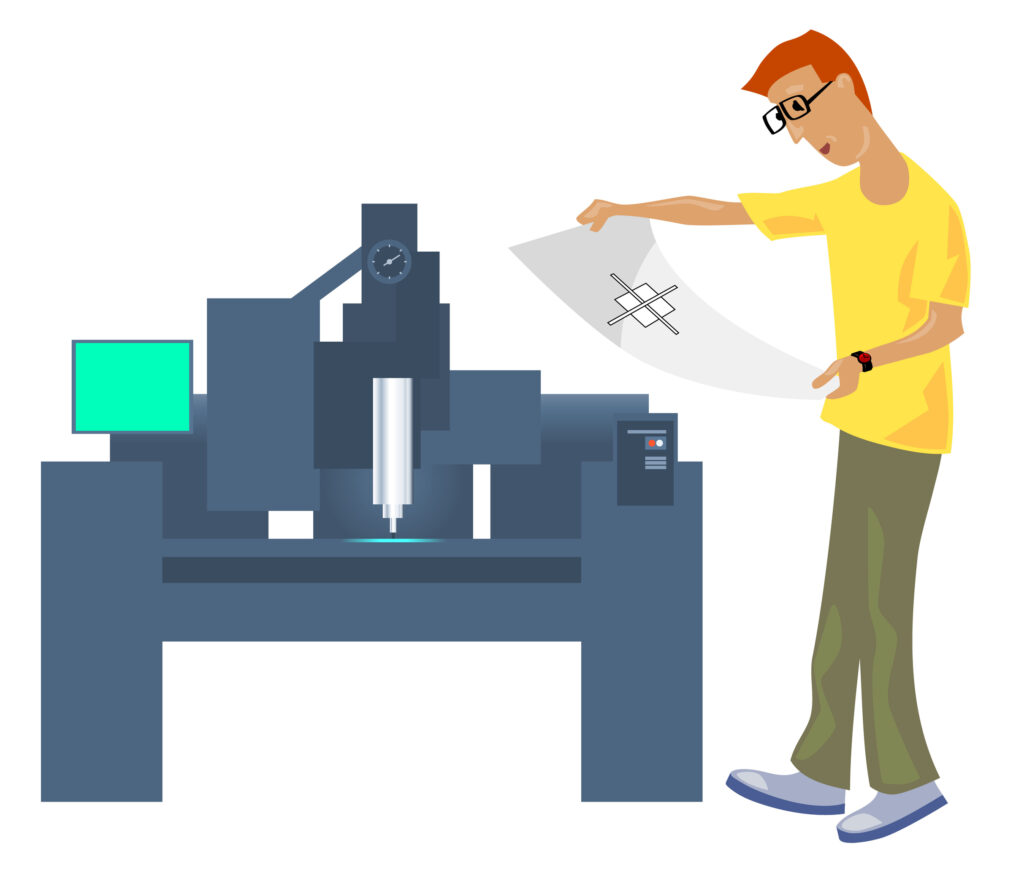
Feed Rate
The feed rate, or the speed at which the diamond or cbn tool advances through the material, significantly impacts the overall cutting results. A direct relationship exists between the feed rate, the depth of cut, the material's structural characteristics and hardness, and the specifications of the diamond or cbn tool used. The appropriate feed rate should be determined based on the desired quality of the cut, as well as the hardness, density, geometry, and thickness of the material. The applied load should correlate with the intended cut quality and speed, ensuring that the tool is never overstressed, which can lead to a glazed appearance on the diamond tool. The recommended best practice is to begin with a light to moderate pressure, gradually increasing the engagement between the material and the tool until the tool begins to cut autonomously. If dark "burn" marks appear around the diamond section, it indicates that the cutting speed is too high or excessive pressure is being applied. It is crucial that the load or feed rate is not so high that it causes the blade to slow down, as this can adversely affect performance and tool longevity.

How Feed Rate Can Help Improve Diamond & CBN Tool Return On Investment:
Setting the correct feed rate improves the return on investment for diamond and CBN tools by maximizing cutting efficiency and tool longevity. Proper feed rates prevent tool damage and reduce material waste, leading to fewer replacements and less downtime. This optimized performance results in higher productivity and better quality output, ultimately enhancing profitability and delivering a stronger ROI.
Machine Condition
The performance of machines can vary significantly, making it crucial to maintain them in optimal working condition. Regular maintenance is essential, as neglect can lead to inconsistent outcomes and a host of problems such as poor surface finishes, reduced tool life, and other adverse effects. Key components to monitor include bearings, shaft conditions, the stability of the rolling table, belt tension, and the cleanliness of flanges and collets. The maintenance frequency should align with the machine's usage rate, requiring daily or weekly checks and a comprehensive overhaul every two to six months, or more frequently if needed, to ensure reliability and precision in operations.
How Machining Condition Can Help Improve Diamond & CBN Tool Return On Investment:
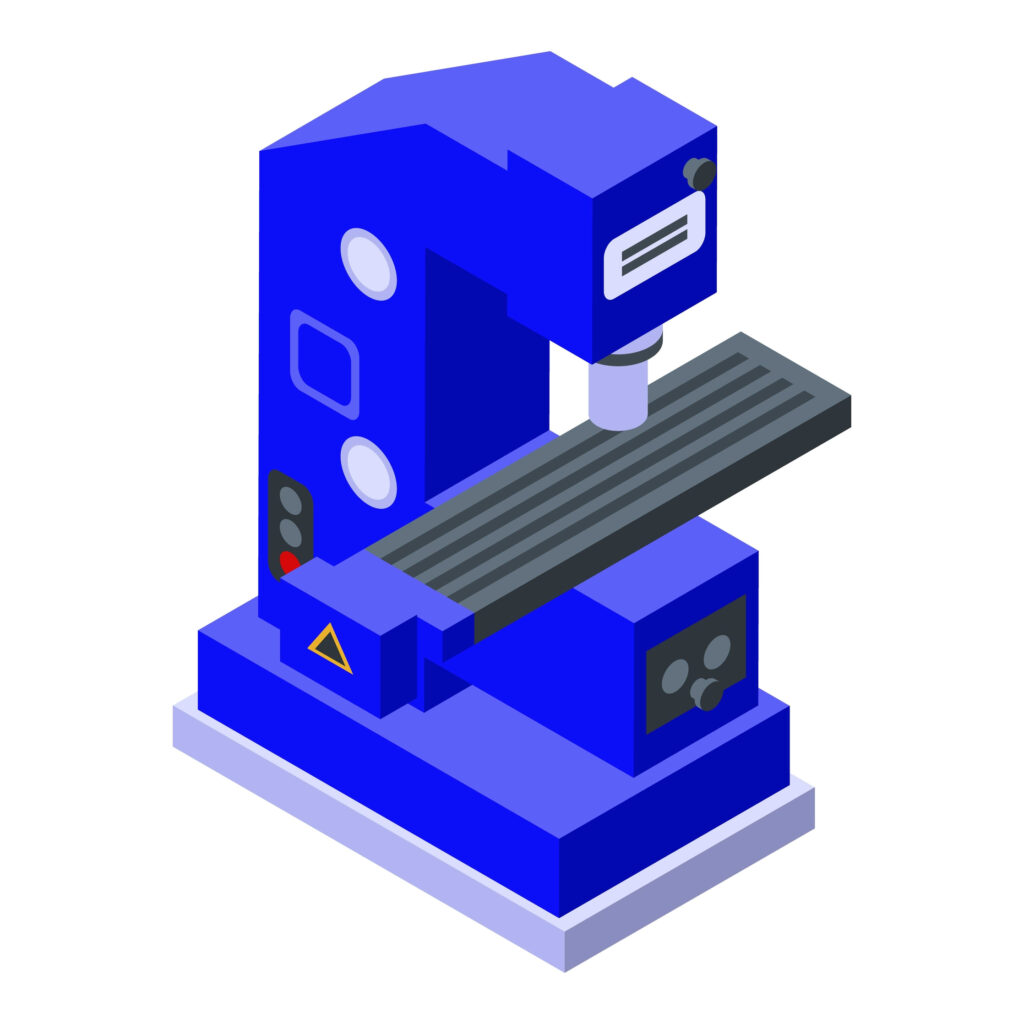
Maintaining machines in optimal condition improves the return on investment for diamond tools by ensuring consistent and reliable performance, which enhances productivity and prolongs tool life. Regular maintenance reduces the risk of costly breakdowns and poor-quality finishes, leading to fewer replacements and increased efficiency. By aligning maintenance frequency with machine usage, businesses can maximize tool performance, minimize downtime, and ultimately achieve greater profitability and a stronger ROI for their diamond tools.
Find out more >>> (see our Machine Buyers Guide on how to select the right cutting, drilling, grinding and polishing equipment for your application)
Driving Power (Horse Power)
No two machines will provide identical results, It is highly important that the machine used be kept in good working condition at all times. A machine where regular maintenance is neglected will provide inconsistent results. Poor bearings, poor shaft conditions, loose rolling table, loose belts, dirty flanges or collets will cause poor surface finish, short tool life and many other undesirable results. Depending on the frequency of use, the machine should be checked on either daily or weekly basis and overhauled every 2 to 6 months or sooner if necessary.
In order the diamond tool manufacturer to provide the proper tool specification, it is necessary to know the maximum horsepower of the machine. Diamond cutting tools require that pressure be applied for maximum performance. Sufficient pressure must be applied to maintain sharp cutting crystals.

If too little pressure is applied, the diamond crystals are likely to become dull and polish. At the same time, too much pressure can also damage the diamond tool. For optimum performance the diamond tool speed should maintained through the cutting period. Since of the factors affecting life and performance of the tool is the SFPM (RPM'S) use. Any fluctuations during the cutting period must be eliminated or reduced to a minimum. Sufficient horse power must be supplied to the driving shaft to assure constant RPM.
How Horse Power Can Help Improve Diamond & CBN Tool Return On Investment:
Understanding and managing driving power (horsepower) is critical for improving return on investment for diamond tools. By matching the tool specification with the machine's maximum horsepower, manufacturers can ensure optimal performance and longevity. Proper pressure application maintains sharp diamond crystals and prevents tool damage, while consistent speed (RPM) ensures effective cutting. Adequate horsepower eliminates fluctuations during cutting, preventing tool wear and maximizing efficiency. This precise matching and maintenance of driving power enhances tool life, reduces waste, and improves cutting quality, all of which contribute to better profitability and ROI for diamond tools.
Environment
The environment significantly influences all aspects of diamond tool operation, including surface finish, precision, cutting speed, and overall costs. Specifications for diamond tools and process recommendations can vary widely based on the working conditions. For example, the demands of a high-volume manufacturing facility producing large quantities of parts will differ markedly from those of a research and development laboratory focused on detailed analyses. Similarly, hobbyists working from their garages face different conditions and requirements. There is a notable disparity in the types of tools, equipment, RPMs, feed rates, material holding techniques, and cooling methods used among these diverse settings. Each group has unique needs and must adopt distinct approaches to meet their specific objectives effectively.
How Environment Can Help Improve Diamond & CBN Tool Return On Investment:

Optimizing diamond tool specifications and processes based on the environment improves return on investment by ensuring that the tools are tailored to the specific demands of the operation. In high-volume manufacturing, this alignment enhances efficiency and reduces costs. In research or hobbyist settings, it ensures high-quality results and extends tool life. Adapting to the unique needs of each environment minimizes wastage, enhances performance, and ultimately provides better value and profitability from the diamond tools, thus improving the return on investment.
Use the Right Diamond Tool Accessories
Selecting the correct diamond tool accessories, such as wheel stiffeners, flanges, and water swivel adapters, is crucial for optimizing performance. These components often go overlooked by users across all experience levels, yet they play a pivotal role in achieving desired outcomes.

For cutting applications, it is essential to choose the correct size flanges or wheel stiffener sets for all thin diamond blades. This ensures the blade is securely held in place, preventing it from "walking" or shifting during operation. Additionally, employing Drill Head Assemblies (water swivel adapters) with core drills is advisable. These assemblies facilitate the delivery of coolant directly through the center of the drill to the cutting zone, enhancing cooling and cutting efficiency.
How Right Accessories Can Help Improve Diamond & CBN Tool Return On Investment:
Selecting the right diamond tool accessories improves return on investment by enhancing performance, ensuring precision, and extending tool life. Properly chosen accessories like wheel stiffeners, flanges, and water swivel adapters secure the tools and enhance cooling, leading to more efficient and accurate cutting. This reduces tool wear and prevents costly mistakes, ultimately increasing productivity, reducing waste, and enhancing profitability, thereby maximizing the ROI for diamond tools.
Find out more >>> (see our Guide on Understanding Which Diamond Tools Accessories are Available and which ones to use for your application)
Right Coolant at Point of Contact
Coolant provides cooling, lubrication, and material chip/swarf removal properties to the cutting zone. Possible coolants include water soluble lubricants, oils, and even plain water. Which coolant to use depends on the application. Plain water evaporates at 212 F. Often temperature in your cutting zone reaches as much as 500 degrees F. Often water evaporates, before it has a chance of affectively cooling the diamond tool and material. Resulting in shorter Tool Life, Material Damage or micro cracks associated with overheating. Water may cool your diamond tool, yet provide poor lubrication properties needed for optimum performance. Not matter which coolant is used, it should come in contact where the material and tool intersect. Optimum coolant nozzle orientation allows the most narrow angle of contact between the diamond tool and coolant. Coolant should have enough velocity to overcome the air barrier.

How Right Coolant at Point of Contact Can Help Improve Diamond & CBN Tool Return On Investment:
Using the right coolant at the point of contact significantly improves return on investment for diamond tools by enhancing tool performance and longevity. Effective cooling and lubrication prevent overheating, which reduces tool wear, prevents material damage, and improves cutting efficiency. By ensuring the coolant reaches the tool-material intersection with appropriate velocity and orientation, users can achieve optimal cutting conditions, reducing operational costs, minimizing downtime, and increasing productivity, all of which contribute to a stronger ROI.
Material Holding Method
Securing the material properly is a crucial yet often underemphasized step in the application process. The selected material holding method should ensure that the material remains stationary to prevent any movement during cutting. There are various fixtures and methods designed to accommodate a large variety material shapes and geometries. The choice of which method to employ should be based on the initial dimensions of the material, the desired depth of cut, and the material's properties, including hardness, brittleness, and overall geometry.
A common challenge in material mounting or fixturing is the potential for chipping at the bottom of the material as the tool exits. Providing adequate support at the base of the material is essential to mitigate this issue and ensure a clean, precise cut.
How Right Coolant at Point of Contact Can Help Improve Diamond & CBN Tool Return On Investment:
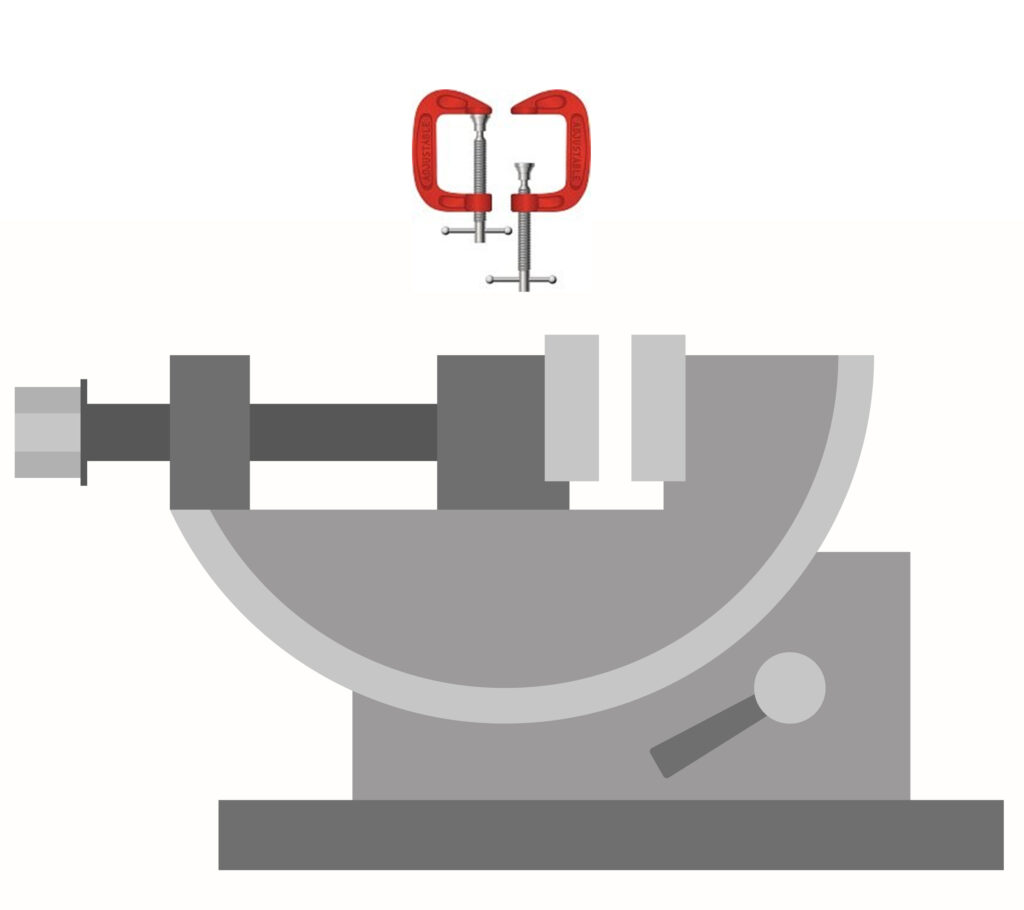
Choosing the appropriate material holding method for diamond tools significantly improves return on investment by ensuring stability and precision during cutting. Properly securing the material prevents unwanted movement, resulting in clean and accurate cuts, which reduces waste and enhances tool efficiency. Additionally, mitigating issues like chipping at the bottom of the material by providing adequate support prevents damage and prolongs tool life. This optimal handling of materials leads to higher quality output, fewer tool replacements, and improved productivity, all contributing to a stronger ROI for diamond tools.
The Right RPM'S
One of the key factors in the effective use of diamond tools is selecting the appropriate RPM’s (revolutions per minute). If the diamond tool rotates too slowly, it can drag and generate excessive heat. Conversely, if it spins too fast, it creates friction which also leads to heat buildup, potentially damaging the tool. Heat is particularly detrimental to diamond tools, making the choice of RPM a crucial element for successful operation. Diamond & CBN tools typically require RPMs ranging from 100 to 23,000, depending on the specific application and tool type. Proper RPM settings are essential for optimizing both the performance and longevity of your diamond tools.

To assist our clients in achieving the best results, we recommend consulting with our specialists who can provide guidance based on your specific needs and the characteristics of the material you are working with. Additionally, we offer tailored advice and support to ensure you adjust your equipment settings for optimal efficiency and safety during tool operation. This approach helps prevent tool damage and enhances overall productivity.
How the Right RPM’s Can Help Improve Diamond & CBN Tool Return On Investment:
Choosing the right RPMs for diamond tools enhances return on investment by preventing excessive heat buildup, which can damage the tool and compromise its performance. Optimal RPM settings ensure efficient cutting, extend tool lifespan, and minimize operational issues, leading to reduced replacement costs and increased productivity. By consulting with specialists and tailoring RPM settings to the specific application, businesses can maximize the efficiency and safety of their diamond tools, ultimately improving profitability and delivering a stronger ROI.
Find out more >>> see our Guide on Selecting Right RPM’s for your application
Tool Bond Type & Design
The bond type and design of diamond and CBN tools play a pivotal role in their performance, directly impacting their hardness, heat resistance, and wear rate. The bond, which holds the diamond or CBN particles in place, influences how the tool interacts with various materials and conditions. Different applications and material properties require distinct bond types and designs to achieve optimal results.
The bond matrix and diamond grit size determine how the tool cuts through different materials. Harder materials typically necessitate tools with harder bond types or specific diamond grit sizes to maintain cutting efficiency. The correct bond type ensures that the diamond particles are held securely during cutting, preventing premature wear or damage to the tool and ensuring consistent performance.

How Using the Right Bond Type Can Help Improve Diamond & CBN Tool Return On Investment:
By carefully selecting and maintaining the right bond type and design for diamond and CBN tools, businesses can enhance durability, cutting efficiency, and overall tool performance. This tailored approach reduces tool wear, minimizes operational costs, and maximizes productivity, thereby improving the return on investment.
Cutting Depth & Width
The cutting depth and width of a diamond or CBN tool significantly impact the load exerted on both the tool and the machine, affecting tool wear, power requirements, and overall performance. When the cutting depth or width is too great, it accelerates tool wear and increases the power demand on the machine, leading to potential motor strain, reduced efficiency, overheating, or mechanical failure. The interaction between cutting depth, width, feed rate, and RPMs is crucial for optimizing efficiency, with larger depths and widths necessitating lower feed rates and RPMs to avoid overloading, while shallower and narrower cuts can be performed at higher speeds and feed rates. To ensure optimal performance, adjustments should be made based on the machine's capabilities and the material's properties, with incremental passes used for deep or wide cuts to manage the load and prevent damage.
How Cutting Depth & Width Can Help Improve Diamond & CBN Tool Return On Investment:
Cutting Angle and Technique
The cutting angle and technique employed during diamond and CBN tool operations significantly influence the quality of the cut and the wear rate of the tool. The cutting angle determines how the tool engages with the workpiece, directly affecting the surface finish, dimensional accuracy, and potential for material damage. Proper cutting angles and techniques optimize the interaction between the tool and the material, enhancing cutting efficiency. Incorrect angles or poor technique can lead to suboptimal cuts, increased tool wear, and even tool failure. Training operators on correct cutting angles and techniques, specific to each tool and material, is crucial for achieving optimal results. Regularly reviewing cutting angles and approaches ensures they remain optimal for the current job, enhancing efficiency and preventing tool damage.
How the Cutting Angle & Technique Can Help Improve Diamond & CBN Tool Return On Investment:
Focusing on proper cutting angles and techniques improves return on investment by enhancing the quality of the cuts, reducing tool wear, and maximizing the lifespan of diamond and CBN tools. This attention to detail improves cutting efficiency, reduces operational costs, and increases productivity, ultimately leading to a stronger ROI.
Diamond Crystal Quality & Consistency
The quality and size of diamond crystals in a tool directly influence its cutting precision and speed. High-quality diamond crystals provide sharper and more durable cutting edges, resulting in cleaner cuts and faster processing, while poor-quality diamonds might wear down quickly or fail to cut effectively. Consistent, high-quality diamonds distribute the cutting load evenly, reducing the risk of tool damage or failure. The interaction between diamond crystal quality, material hardness, and machine power is crucial for optimal results, requiring high-quality diamond grit appropriate for the specific material and desired outcome. Regular inspection and replacement of worn tools help maintain cutting efficiency, ensuring that the tools perform effectively and efficiently.

How Diamond Crystal Quality & Consistency Can Help Improve Diamond & CBN Tool Return On Investment:
Focusing on diamond crystal quality and consistency enhances return on investment by improving cutting precision, speed, and tool durability. High-quality diamonds provide longer-lasting tools, reducing replacement costs and downtime, while consistent crystal distribution ensures efficient cutting and optimal surface finishes, ultimately leading to a stronger ROI for diamond tools.
Find out more >>> (see out Guide on Diamond Crystal Strength)
Cooling and Lubrication Systems
Effective cooling and lubrication systems are crucial for preventing overheating and reducing friction during diamond and CBN tool operations. These systems enhance tool longevity and cut quality by dissipating heat and minimizing contact friction, reducing the risk of thermal damage, warping, and accelerated wear. Their effectiveness is influenced by environmental factors and machine condition, and they should be designed and maintained to suit the specific tool and material combination. Regular adjustments and maintenance ensure they adapt to varying conditions, maintaining optimal performance.

How Diamond Crystal Quality & Consistency Can Help Improve Diamond & CBN Tool Return On Investment:
By preserving tool longevity, improving cut quality, and maintaining efficient performance, effective cooling and lubrication systems enhance return on investment for diamond and CBN tools. They minimize tool wear, reduce operational issues, and extend tool life, leading to lower costs and higher productivity, ultimately maximizing the ROI for these tools.
Find out more >>> (see out Coolant & Lubrication systems)
Guide How Different Variables Impact Diamond & CBN Tool Performance
This table provides insights into how each variable interacts with others, highlighting their respective impact on performance, longevity, and overall effectiveness of the diamond tools.
|
Variable |
Impact on Tool Performance |
Interactions with Other Variables |
Recommended Practices |
|---|---|---|---|
|
Material Hardness & Abrasiveness |
Determines cutting speed and wear |
Harder materials require slower speeds and may increase tool wear. Abrasiveness can accelerate tool degradation. |
Select tools with appropriate grit size and bond hardness. Adjust RPMs based on hardness and abrasiveness. |
|
Material Geometry |
Affects cutting precision and tool access |
Complex shapes may require specialized tools and slower speeds to maintain accuracy. The geometry influences the cutting approach and the forces applied to the tool. |
Use specialized tooling for complex shapes and adjust cutting parameters to account for geometric challenges. |
|
Tool Dressing (Truing & Dressing) |
Essential for peak performance |
The effectiveness of dressing affects how the tool interacts with the material, impacting wear rate and quality of the cut. Proper dressing is necessary to expose new diamonds for cutting, crucial for maintaining efficiency. |
Regularly true and dress tools using compatible dressing sticks; ensure alignment with machine for optimal cutting precision. |
|
Operator Experience & Training |
Directly influences outcomes |
Experienced operators can optimize performance and extend tool life by avoiding common mistakes and properly managing tool and machine settings. |
Provide comprehensive training and regular updates on best practices and new technologies. |
|
Machine Condition |
Affects consistency and precision |
Well-maintained machines support optimal tool performance; poor conditions can lead to uneven wear and poor outcomes. |
Conduct regular maintenance checks; overhaul machines as needed based on usage frequency. |
|
Feed Rate |
Crucial for quality and efficiency |
Interacts with material hardness and tool specifications. Too high or too low rates can lead to tool damage or inefficient cutting. |
Adjust feed rates based on material properties and desired cut quality. Start with moderate pressure and adjust as necessary. |
|
Environment |
Impacts tool operations and lifespan |
External conditions such as temperature and cleanliness can affect tool performance. Different settings may require adjustments in tool usage and maintenance practices. humidity, dust, and temperature can impact tool performance and lifespan. For instance, high humidity can affect the efficiency of cooling systems, while dust can clog machines and tools, leading to increased wear. |
Adapt tool and operation parameters to the specific environment. Ensure adequate cooling and lubrication. Maintain a controlled environment where possible. Implement dust and debris management systems and regulate temperature and humidity to protect both the tools and the materials from adverse environmental effects. |
|
Material Holding Method |
Ensures accuracy and prevents damage |
Inadequate holding can cause material movement and inaccuracies. Interacts with tool type and material geometry to affect cutting precision. |
Use appropriate fixtures to secure materials firmly and prevent movement during cutting. |
|
RPMs (Revolutions Per Minute) |
Key for cutting efficiency and safety |
Incorrect RPMs can lead to excessive heat and premature wear. Interacts with material hardness and tool specifications. RPM settings must be adjusted according to the material hardness and the specific tool being used, often in relation to feed rate and tool diameter. |
Consult with specialists to determine optimal RPMs based on material properties and tool type. Use RPM guidelines provided by tool manufacturers and adjust based on real-time feedback and material response during cutting operations. Seek expert advice when uncertain about the best RPM settings for new or unusual materials. |
|
Horse Power |
Influences cutting power and speed |
Higher horsepower allows for faster cutting but may increase tool wear if not properly managed. Interacts with feed rate, RPM, and material properties. |
Select machines with sufficient horsepower for the application. Adjust RPM and feed rate accordingly to balance power and precision. |
|
Coolant Use |
Essential for cooling and lubrication |
Proper coolant use prevents overheating and reduces wear. The choice of coolant can affect cutting speed and finish. Coolant flow and temperature play critical roles. |
Select the appropriate coolant and ensure it is applied correctly at the point of contact. Maintain optimal coolant flow and temperature. |
|
Diamond Tool Accessories |
Enhances tool performance |
Correct accessories like flanges and adapters are crucial for tool stability and precision. Inadequate accessories can lead to suboptimal tool performance and increased wear. |
Always use the recommended accessories for each tool to ensure stability and maximize performance. |
Additional Consideration of Variables Impact Diamond & CBN Tool Performance
|
Variable |
Impact on Tool Performance |
Interactions with Other Variables |
Recommended Practices |
|---|---|---|---|
|
Tool Bond Type & Design |
Determines durability and cutting efficiency |
The bond type and design of the tool dictate its hardness, heat resistance, and wear rate, influencing its interaction with different materials and conditions. Harder materials might require tools with different bonding matrix or diamond grit sizes. |
Choose tool materials and constructions that are specifically suited to the material to be cut and the desired lifespan. Regularly assess tool performance to adapt tool choices as necessary. |
|
Cutting Depth and Width |
Affects the load on the tool and the machine |
Deeper or wider cuts increase the load on the diamond tool and the driving machine, affecting tool wear and the need for power. This interaction also influences decisions about feed rate and RPMs to optimize cutting efficiency without overloading the tool. |
Adjust cutting depth and width based on machine capabilities and material properties. Use incremental passes for deep or wide cuts to manage the load and prevent tool damage. |
|
Cutting Angle and Technique |
Influences the quality of the cut and tool wear |
The angle and technique used in cutting can affect the efficiency and quality of the workpiece, as well as how quickly a tool wears down. Incorrect techniques can lead to suboptimal results and increased strain on the tool. |
Train operators on proper cutting techniques specific to the tool and material. Regularly review cutting angles and approaches to ensure they are optimal for the current job. |
|
Diamond Crystal Quality & Consistency |
Directly affects cutting precision and speed |
The quality and size of the diamond crystal determine how effectively the tool can engage with the material, influencing cutting speed and finish. Poor quality diamonds might wear down quickly or fail to cut effectively, interacting with material hardness and machine power. |
Ensure high-quality diamond grit appropriate for the material and desired outcome. Regularly inspect and replace worn tools to maintain cutting efficiency. |
|
Cooling and Lubrication Systems |
Prevents overheating and reduces friction |
Effective cooling and lubrication are essential for maintaining the longevity of the tool and quality of the cut. These systems interact with environmental factors and machine condition to ensure optimal tool performance. |
Design and maintain cooling and lubrication systems that are effective for the specific tool and material combination. Adjust systems according to environmental conditions to ensure effective cooling and lubrication. |
Have Questions ? – Let us Help
Here is what information we will need
Choosing the right diamond tool for your specific application is crucial for optimizing performance and efficiency in your machining processes. Our expert team is dedicated to assisting you in this selection by engaging in a comprehensive consultation. During this process, we will ask a series of targeted questions designed to extract critical details about your operational needs. Understanding these specifics is essential because each diamond tool is uniquely engineered for particular scenarios and may perform differently under various conditions.
Here are the key areas we will explore to ensure you select the most suitable diamond tool:

-
 Material Being Machined: What type of material are you working with?
The properties of the material, such as hardness, brittleness, and abrasiveness, directly influence the choice of diamond tool. Each material responds differently, requiring tools with specific characteristics to achieve the best results.
Material Being Machined: What type of material are you working with?
The properties of the material, such as hardness, brittleness, and abrasiveness, directly influence the choice of diamond tool. Each material responds differently, requiring tools with specific characteristics to achieve the best results.
-
 Machining Method: What operations will the diamond tool be used for?
Depending on whether you are cutting, grinding, or drilling, different specifications of diamond tools will be necessary to handle the demands of each technique effectively.
Machining Method: What operations will the diamond tool be used for?
Depending on whether you are cutting, grinding, or drilling, different specifications of diamond tools will be necessary to handle the demands of each technique effectively.
-
 Equipment Used: What machinery will be utilized?
The type of machine impacts the diamond tool selection, particularly in terms of compatibility and operational efficiency. Ensuring that the tool fits perfectly with your equipment avoids potential operational issues and maximizes tool life.
Equipment Used: What machinery will be utilized?
The type of machine impacts the diamond tool selection, particularly in terms of compatibility and operational efficiency. Ensuring that the tool fits perfectly with your equipment avoids potential operational issues and maximizes tool life.
-
 Machine RPM: What are the operational speeds at which your machine runs?
The RPM affects the effectiveness of the diamond tool, as different tools are designed to perform optimally at specific speeds. Correct RPM settings are critical to prevent tool damage and ensure smooth operation.
Machine RPM: What are the operational speeds at which your machine runs?
The RPM affects the effectiveness of the diamond tool, as different tools are designed to perform optimally at specific speeds. Correct RPM settings are critical to prevent tool damage and ensure smooth operation.
-
 Coolants Used: What coolants will be employed during the machining process?
The type of coolant can significantly affect the performance of diamond tools, particularly in terms of temperature control and debris removal, which are crucial for maintaining tool integrity and performance.
Coolants Used: What coolants will be employed during the machining process?
The type of coolant can significantly affect the performance of diamond tools, particularly in terms of temperature control and debris removal, which are crucial for maintaining tool integrity and performance.
-
 Flange Size or Accessories: What accessories or flange sizes are involved in your setup?
Flange Size or Accessories: What accessories or flange sizes are involved in your setup?
-
 Surface Finish Requirements: What is the desired surface finish for your
Different diamond tools offer varying levels of surface finish. Knowing the required finish helps in selecting the appropriate tool.
Surface Finish Requirements: What is the desired surface finish for your
Different diamond tools offer varying levels of surface finish. Knowing the required finish helps in selecting the appropriate tool.
-
 Tolerances: What are the dimensional tolerances for your finished product?
Precision is key in many applications, and some tools are better suited for maintaining tight tolerances.
Tolerances: What are the dimensional tolerances for your finished product?
Precision is key in many applications, and some tools are better suited for maintaining tight tolerances.
-
 Cut Depth and Width: What is the expected depth and width of cut for your application?
Different tools are optimized for varying depths and widths, and selecting the right one ensures efficiency and performance.
Cut Depth and Width: What is the expected depth and width of cut for your application?
Different tools are optimized for varying depths and widths, and selecting the right one ensures efficiency and performance.
-
 Material Geometry: What is the shape or geometry of the material being machined?
Complex shapes may require specialized tools, and knowing the geometry aids in tool selection.
Material Geometry: What is the shape or geometry of the material being machined?
Complex shapes may require specialized tools, and knowing the geometry aids in tool selection.
-
 Usage Volume: What is your expected production volume?
Occasional use and High-volume production may require different approach and more specialized tools to handle continuous operation.
Usage Volume: What is your expected production volume?
Occasional use and High-volume production may require different approach and more specialized tools to handle continuous operation.
-
 Machine Condition: What is the condition of the machine being used?
A well-maintained machine ensures better tool performance, while a poorly maintained machine may require more robust tooling.
Machine Condition: What is the condition of the machine being used?
A well-maintained machine ensures better tool performance, while a poorly maintained machine may require more robust tooling.
-
 Tool Wear: What is the expected tool life or wear rate for your application?
Understanding the desired tool life helps in selecting a tool with the appropriate wear resistance.
Tool Wear: What is the expected tool life or wear rate for your application?
Understanding the desired tool life helps in selecting a tool with the appropriate wear resistance.
-
 Operator Experience: How experienced are the operators using the diamond tools?
Less experienced operators may benefit from tools that are easier to use or more forgiving to operational errors.
Operator Experience: How experienced are the operators using the diamond tools?
Less experienced operators may benefit from tools that are easier to use or more forgiving to operational errors.
-
 Cutting Environment: What are the environmental conditions during machining (e.g., temperature, humidity, dust)?
Environmental conditions can affect tool performance, and selecting a tool suitable for those conditions ensures longevity and efficiency.
Cutting Environment: What are the environmental conditions during machining (e.g., temperature, humidity, dust)?
Environmental conditions can affect tool performance, and selecting a tool suitable for those conditions ensures longevity and efficiency.
-
 Budget: What is your budget for diamond tooling?
Different tools have varying costs, and aligning the tool choice with the budget helps in balancing cost-effectiveness and performance.
Budget: What is your budget for diamond tooling?
Different tools have varying costs, and aligning the tool choice with the budget helps in balancing cost-effectiveness and performance.
-
 Tool Accessories: What additional accessories or tooling aids do you require for your application?
Accessories such as dressing sticks, adaptors, and flanges can enhance tool performance, and knowing the needs helps in recommending the right options.
Tool Accessories: What additional accessories or tooling aids do you require for your application?
Accessories such as dressing sticks, adaptors, and flanges can enhance tool performance, and knowing the needs helps in recommending the right options.
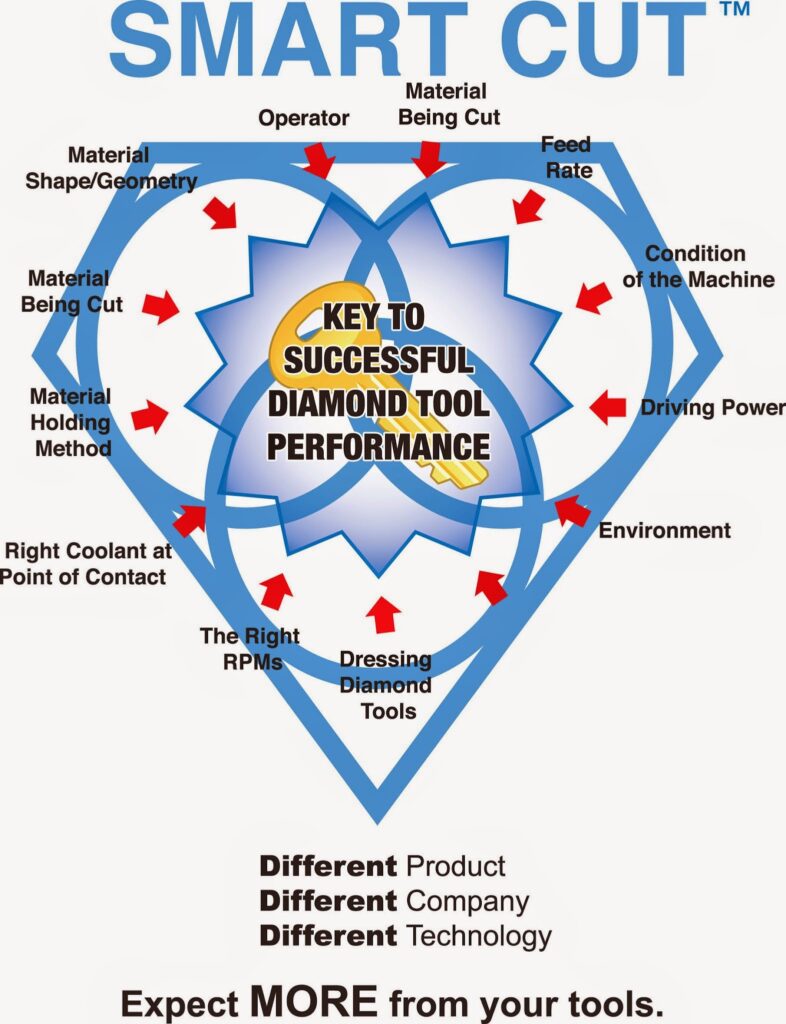
Understanding these details helps us provide a solution that not only meets but exceeds your expectations. A tool that is ideal for one application might not be suitable for another due to the intricate differences in operational conditions. Our goal is to help you define your requirements accurately, guiding you towards the right diamond or cbn tool that saves you time and resources while improving quality and consistency.
This personalized approach to tool selection is part of our commitment to delivering excellence and supporting your business’s specific needs. By providing you with the best possible diamond or cbn tool for your application, we ensure that your operations run more smoothly and efficiently.
Our
Process Development
-
1

Discovery
We discuss your specific requirement in detail to determine the best solution for your needs.
-
2

Recommend Solution
We provide you with recommend options for your application based on your requirements along with quotation and lead time.
-
3

Prepaire To Implement
When you are ready to order, we send you confirmation of the tool specification always in writting. Your order is placed in que to be produced within the quoted lead time.
-
4

Implement & Deliver
The finished products go through quality control process and also inspected for conformance to specification agreed upon. The order is packaged and shipped to you using your requested shipping method. Certificate of conformance or any other documentation can be provided upon request.
-
5

Service & Support
We follow up with you to receive feedback on the tool performance. We also provide usage recommendatios and technical support if needed.
How
We work
1. Application
Analysis
- Comprehensive examination of your application to understand the specific requirements and challenges.
- Identification of the most suitable precision diamond tools for the job.
2. Material
Testing
- Conducting extensive tests on materials ranging from 9.6 to 4 on the Mohs scale to determine the best approach for cutting, slicing, dicing, and drilling.
3. Tool
Optimization
- Customizing our precision diamond tools to enhance performance and efficiency for your specific application.
4. Prototyping &
Testing
- We offer prototyping and testing services to validate the process and make any necessary adjustments before full-scale production.
5. Process
Optimization
- Streamlining the entire process from start to finish to minimize waste and maximize productivity.
6. Quality
Control
- Rigorous quality checks to ensure the final product meets our high standards and exceeds your expectations.
7. Support and
Guidance
- Providing ongoing support and expert advice to help you navigate any challenges and make informed decisions.
8.Continuous
Improvement
- We are always seeking ways to improve our processes and products, and we value feedback from our clients to help us achieve this.
